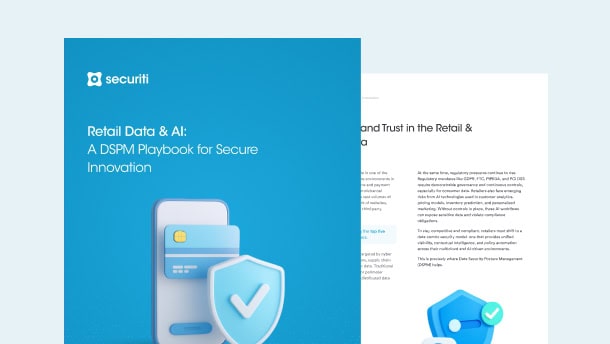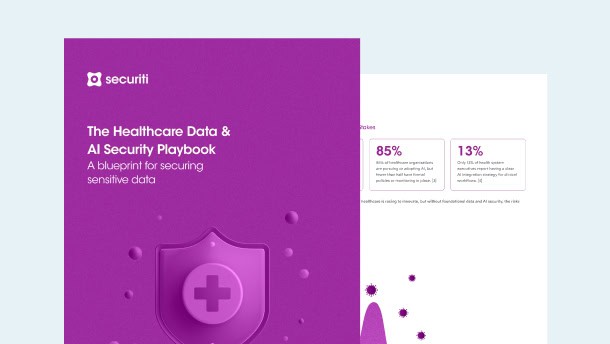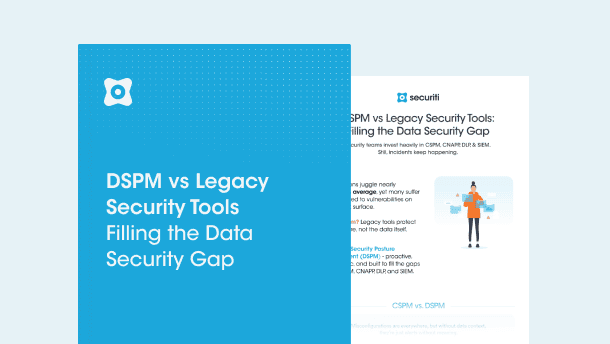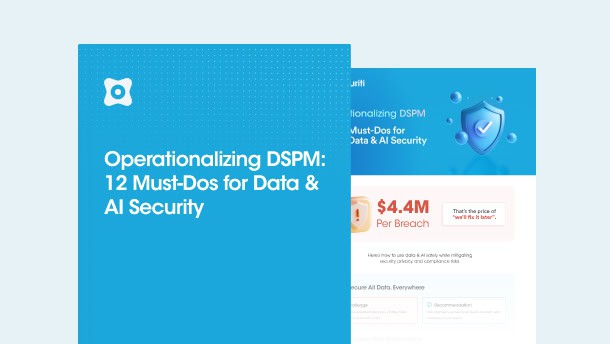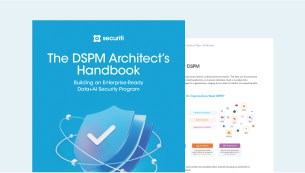Generative AI (GenAI) reflects the epitome of technological advancements, shaping industries globally at an unprecedented rate. Gartner forecasts that by 2026, 80% of enterprises will incorporate Gen AI APIs or AI-enabled applications, a whopping rise from 5% in 2023.
Copilots are the tools that practically demonstrate the powerful capabilities of GenAI. The intelligent AI chatbot offers a myriad of use cases across industries, enabling organizations to streamline workflows or simplify complex analysis into actionable insights.
Among the leading copilots, Microsoft 365 Copilot offers a wide range of dynamic features and has proven to increase users' productivity, quality of work, and focus. However, its immense popularity and adoption have raised serious concerns about data privacy, security, governance, and compliance.
This blog discusses Microsoft 365 Copilot’s data privacy concerns, how they arise, and the best practices to mitigate them.
Data Privacy Risks Impacting Microsoft 365 Copilot
Microsoft 365 Copilot leverages multiple components that work together to deliver myriad business benefits. These components include the integration of foundational LLMs, Microsoft Graph, and Microsoft 365 productivity apps.
The Copilot accesses business content and context across the Microsoft Graph to generate relevant responses. If the data in the Microsoft environment lacks proper security and privacy guardrails, it will not only affect Copilot’s responses but might also expose regulated information to unauthorized users. This is one of the reasons the US Congress banned the use of the Copilot.
Let’s examine some of the top data privacy issues impacting AI copilots.
Risk of Bias Influencing Copilot Responses
AI bias is a fairly broad and detailed topic in its own right. Human bias has been around from time immemorial, and gradually, it has crept its way into complex AI algorithms. Gartner has also highlighted bias as one of the top 4 risks in its report, the Top 4 Copilot for Microsoft 365 Security Risks and Mitigation Controls.
Bias can affect AI or AI copilot responses in several ways. One of the most common is through training data. If the training data contains biased decisions or gender inequities, the output will mirror them. For instance, Amazon decommissioned its AI recruitment tool when it showed bias against women applicants. The tool recommended male candidates based on specific words detected in their resumes.
Algorithmic bias is another source of bias that can significantly impact AI outcomes. This type of bias occurs when a certain group of datasets is underrepresented or unrepresented in training data. Algorithmic bias can have a detrimental effect when viewed under the sensitive lens of healthcare or criminal justice.
Besides social-economic damages, AI bias can have serious implications when assessed against data regulations like the EU General Data Protection Regulation (GDPR). Article 5 of the GDPR states that personal data must be “processed lawfully, fairly and in a transparent manner in relation to the data subject (‘lawfulness, fairness and transparency’).” Biased responses can result in unfair data processing, ultimately leading to GDPR violations and associated legal fines.
Article 10, Data and Data Governance, of the EU AI Act contains similar provisions related to AI bias. Amongst other concerns, it requires organizations to evaluate datasets for possible bias that may affect the fundamental rights of natural persons, their health and safety, or result in discrimination. It also demands that organizations take appropriate measures to identify and mitigate those biases.
Risk of Faulty AI Output
Garbage in and garbage out is a known principle in the AI realm. It means if you train your AI on bad data, it will produce bad responses. AI trains on large volumes of data, especially unstructured data, scattered across different systems and applications. Apart from faulty AI output, data that is not prepared, sanitized, and validated appropriately can create mounting security risks as well as privacy and compliance concerns.
Surveys reveal that 77% of the captured data is either unclassified or redundant, obsolete or trivial (ROT) data, while only 23% is good, quality data. ROT data can result in serious security risks. It widens the attack surface and opens plenty of backdoors to data that might be regulated data.
ROT data also poses significant regulatory risks, as it may contain overretained data. In fact, 75% of the datasets containing personally identifiable information (PII) are overretained. Several data protection regulations and standards, such as the Health Insurance Portability and Accountability Act (HIPAA) and Sarbanes–Oxley Act (SOX), the European Union’s General Data Protection Regulation (GDPR), and California Privacy Rights Act (CPRA), contain strict provisions regarding data retention.
Risk of Overpermissioning & Sensitive Data Exposure
In cloud environments, over 40,000 different types of permissions are granted to different identities. To make matters worse, over 50% of those permissions are high-risk. Microsoft further reveals in its 2023 State of Cloud Permissions Risks Report that only 1% of the permissions granted are used, while the remaining are either inactive or unused for months.
In the Microsoft Sharepoint environment, users often grant permissions to unintended users. It could be because the permissions are granted in bulk to a large group of users or due to misconfigured permissions. The risk increases the likelihood of exposing overpermissioned files to unauthorized users and exposing confidential data to users who are not meant to see it, such as M&A plans.
Another risk that could potentially leak sensitive data to unauthorized users is the copilot’s ability to integrate with third-party tools or services. All in all, overpermissioning and sensitive data leaks are critical security risks and carry significant regulatory risks and, ultimately, legal fines. For instance, the EU GDPR discusses and recommends implementing strict data security measures and minimization policies, such as those mentioned in Article 5, Article 25, and Article 32.
Risk of Potential Misuse of Sensitive Data
Data protection regulations like the GDPR and CPRA require strict purpose limitations. They require covered entities to ensure that personal data is only collected for specific, explicit, and legitimate purposes. However, defining clear purpose limitations during development and model training can be challenging.
Copilot for Microsoft 365 uses training data and the associated context extracted from various documents, emails, and other resources for improved responses. Hence, there’s a high likelihood that the tool could generate responses from the data for reasons beyond its intended purpose. Such scenarios could throw organizations into legal trouble due to non-compliance.
Best Practices to Address Microsoft 365 Copilot Data Privacy Risks
It is important to have a well-thought-out strategy in place to minimize copilot compliance concerns and reap its many benefits, allowing you to stay ahead of the competition.
Conduct a Data Protection & Privacy Impact Assessment
Organizations should conduct privacy impact assessment (PIA) and data protection impact assessment (DPIA). Impact assessments are amongst the most important requirements of major data privacy and protection regulations, such as the EU GDPR. For instance, Article 35 of the GDPR requires businesses to conduct DPIAs to find and mitigate risks associated with data processing activities. Similarly, PIAs enable organizations to identify and mitigate risks impacting individuals' privacy rights. A comprehensive impact assessment helps you find privacy and compliance gaps, enabling the safe adoption of copilot and other AI tools.
Mitigate Risky or Unintended Permissions
As mentioned above, granting excessive permissions or failing to resolve misconfigured permissions could expose confidential information. To mitigate this risk, organizations must identify risky combinations across their entire Microsoft ecosystem. An automated knowledge graph can help teams gain contextual insights into identities, permissions, file sensitivity, and regulatory requirements. To reduce the exposure of sensitive data, implement a least-privilege access model and limit the copilot’s access to files with high-sensitivity labels.
Minimize Redundant, Obsolete, or Trivial (ROT) Data
ROT data not only impacts the quality and accuracy of Copilot responses but also poses serious security and privacy risks. For instance, storing sensitive data longer than the given retention time can welcome serious regulatory fines. With a robust data classification and labeling system, organizations can automatically label duplicate, near-duplicate, or obsolete files and exclude them from copilot responses.
Maintain Record of Processing Activities (ROPA)
Organizations must also consider maintaining a record of processing activities (ROPA). In addition to being a compliance requirement, maintaining such records is a good governance practice, as it allows better data management. ROPA enables teams to maintain what data they have, where it is located, and what they intend to do with it. Regarding Copilot use, ROPA can give insights into how the AI tool uses or analyzes the data for different data processing purposes. This further ensures that the data is properly handled and processed in accordance with users’ privacy rights and other regulator requirements.
Three out of four C-suite executives believe failing to leverage and scale AI in the next five years could jeopardize their business. Consider the aforementioned best practices as a starting point to save your organization from sensitive data exposure and embrace copilots safely.
Frequently Asked Questions
WordsCharactersReading time



































